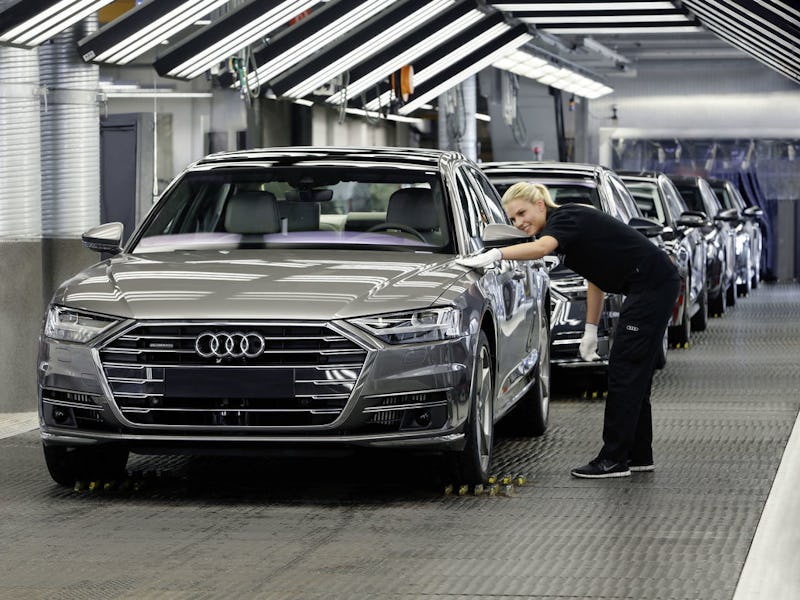The 2017 Audi A8 'Pilot Driving Feature' Firmly Steps Into the Grey Area
This is a bold move.

No one likes being stuck in traffic, but for people rich enough to afford the new, top of the line Audi A8, it may get a little easier. Local laws permitting, Audi’s new pilot-driving feature will autonomously control the vehicle at speeds of up to 37 miles per hour, leaving drivers free to take their hands off the wheel, their feet off the pedals, and, in an unprecedented move, their eyes off the road.
Audi announced the new A8 on Tuesday at the Audi Summit in Barcelona, introducing the new pilot-driving feature, which is an unprecedented step toward a new level of autonomy for consumer vehicles. Its semi-autonomous features include not only pilot-driving at low speeds, but self-parking and garage entry and exit capabilities without a driver in the vehicle, much like Tesla’s Summon feature.
While pretty much every major car company has a plan for self-driving cars, Audi’s pilot driving is notable because it firmly steps into the grey area between driving assist features (which Tesla’s Autopilot is still technically marketed as) and full autonomous control. Under its current description, the pilot driving program would fall under level three autonomy as defined by the Society of Automotive Engineers. Level three autonomy means that the car is able to drive itself with no input from the user in some situations, but must revert control to the user in others. And therein lies the problem.
The shell of the A8, before any of the fancy tech is installed.
Other automakers have shied away from level three autonomy, choosing to bypass it to work on shooting level four or five fully-autonomous driving. The argument, made by everyone from driving instructors to the British government is that level three autonomy lures drivers into a false sense of security, trusting the vehicle to drive itself when they should be paying attention to the road.
To fix this, the new A8’s pilot driving system monitors its users attention with a series of internal cameras pointed at the driver’s face and sensors in the steering wheel, similar to the system used by Cadillac’s Super Cruise feature. When it encounters a situation on the road it can’t handle, it uses tailored audio and visual cues to direct the driver’s attention back to the road to take control. If they do nothing, the car pulls itself over. The handoff between machine and human control is the most dangerous part of autonomous driving, as human drivers unfamiliar with the car’s steering profile are more prone to mistakes, and may not respond in time. But Audi is clearly confident enough it its systems to allow its drivers an unprecedented level of freedom with the pilot mode engaged. While drivers will have to follow local laws (which almost uniformly prohibit driving while watching TV), if those laws change, Audi’s piloted driving system claims to be able to operate the car proficiently enough that a driver could read or watch TV behind the wheel. The are some restrictions, of course — piloted driving is only available on divided-lane highways while moving at speeds of less than 37 miles per hour (or 60 kilometers per hour), the usual conditions of traffic jams.
The piloted driving functions should be rolled out in 2018 A8 production models, which will be the real test of the company’s technology.